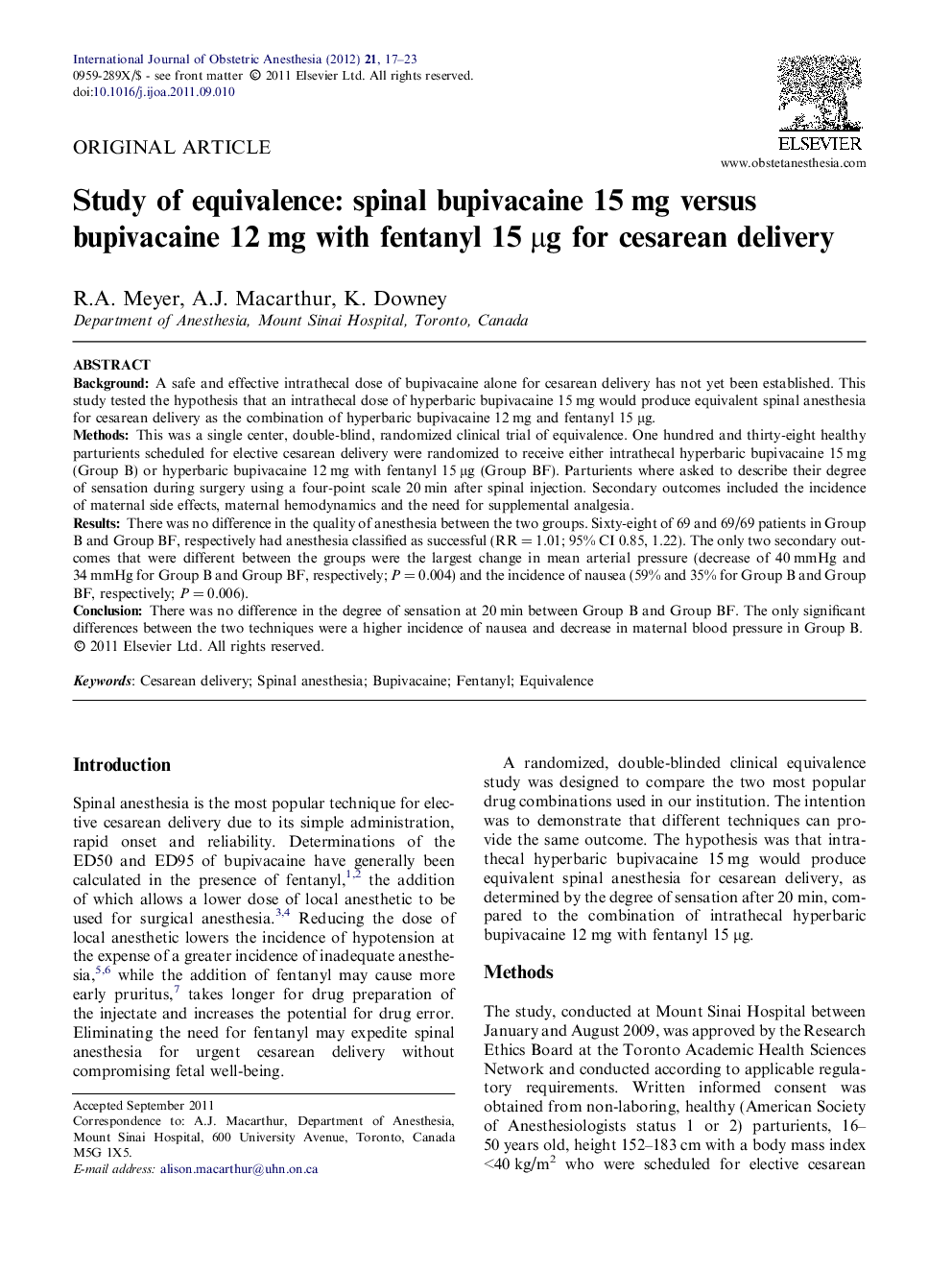| Article ID | Journal | Published Year | Pages | File Type |
|---|---|---|---|---|
| 2757746 | International Journal of Obstetric Anesthesia | 2012 | 7 Pages |
BackgroundA safe and effective intrathecal dose of bupivacaine alone for cesarean delivery has not yet been established. This study tested the hypothesis that an intrathecal dose of hyperbaric bupivacaine 15 mg would produce equivalent spinal anesthesia for cesarean delivery as the combination of hyperbaric bupivacaine 12 mg and fentanyl 15 μg.MethodsThis was a single center, double-blind, randomized clinical trial of equivalence. One hundred and thirty-eight healthy parturients scheduled for elective cesarean delivery were randomized to receive either intrathecal hyperbaric bupivacaine 15 mg (Group B) or hyperbaric bupivacaine 12 mg with fentanyl 15 μg (Group BF). Parturients where asked to describe their degree of sensation during surgery using a four-point scale 20 min after spinal injection. Secondary outcomes included the incidence of maternal side effects, maternal hemodynamics and the need for supplemental analgesia.ResultsThere was no difference in the quality of anesthesia between the two groups. Sixty-eight of 69 and 69/69 patients in Group B and Group BF, respectively had anesthesia classified as successful (RR = 1.01; 95% CI 0.85, 1.22). The only two secondary outcomes that were different between the groups were the largest change in mean arterial pressure (decrease of 40 mmHg and 34 mmHg for Group B and Group BF, respectively; P = 0.004) and the incidence of nausea (59% and 35% for Group B and Group BF, respectively; P = 0.006).ConclusionThere was no difference in the degree of sensation at 20 min between Group B and Group BF. The only significant differences between the two techniques were a higher incidence of nausea and decrease in maternal blood pressure in Group B.
